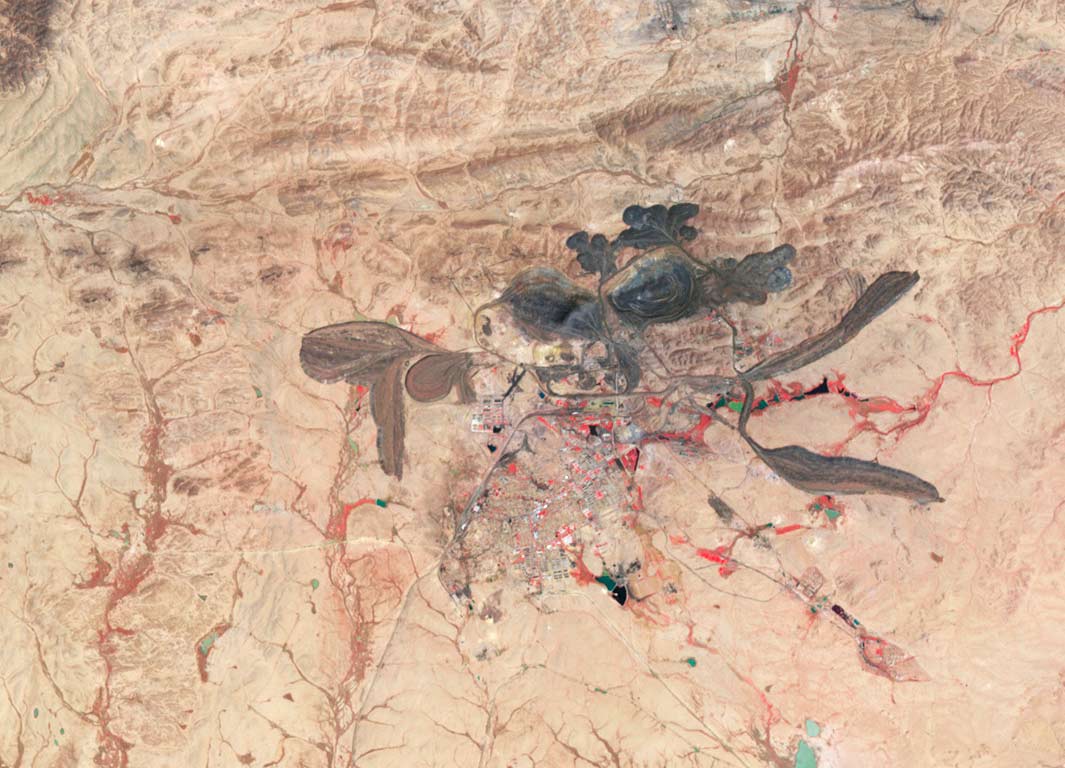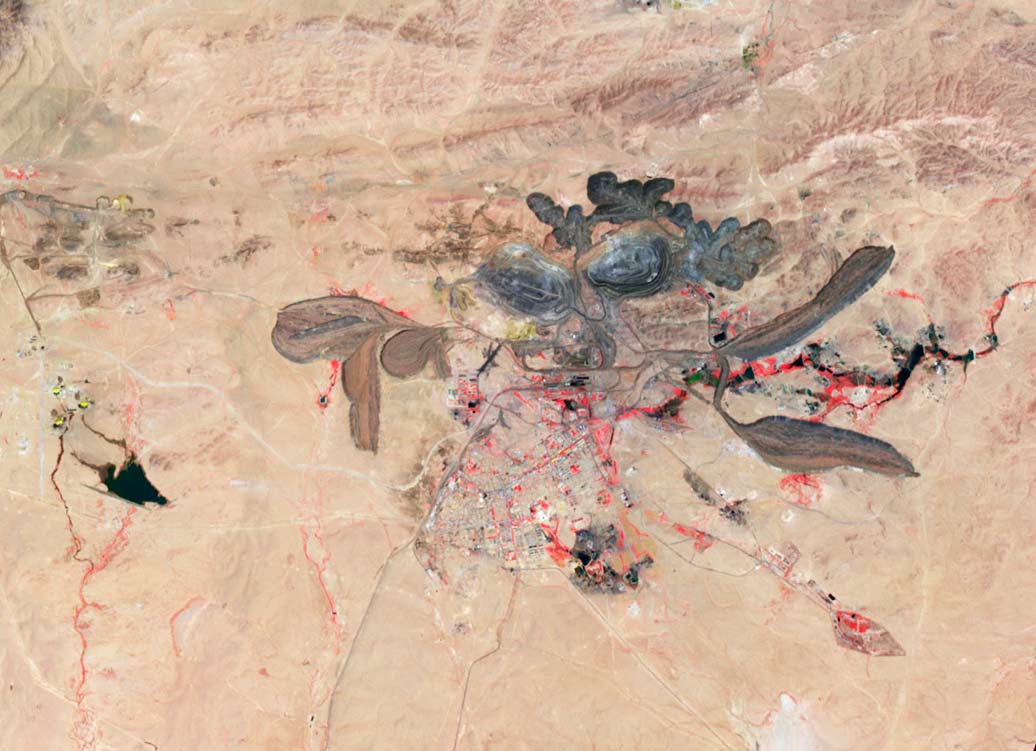Satellite Image Reveals Beauty & Beast of Rare Earth Mining

A satellite image released by NASA Earth Observatory looks more fine art than mining and radioactive waste. But indeed, the picture tells a story of the expanding industry of mining for rare earth elements.
Earth holds 17 of these metallic elements, whose structures and properties make them useful in a wide variety of applications, including products such as magnets, camera lenses and batteries.
As of 2010, about 96 percent the rare earths on the market came from China. In fact, about half come from Bayan Obo located in China's Nei Mongol Autonomous Region. Instruments aboard NASA's Terra satellite reveals the true colors of this Chinese mine on July 2, 2001 and June 30, 2006.
Two circular open-pit mines are visible, as well as a number of tailings ponds and tailings piles. The mine has grown noticeably larger since 2001. According to a USGS report, China produced about 81,000 tons of rare earth metals in 2001, jumping to about 120,000 tons by 2006. (In the images, vegetation appears red, grassland light is brown, rocks are black, and water surfaces are green.) [Bounty of Rare Earth Discovered in Afghanistan]
The mining is not without shortcomings. With every ton of rare metals mined, some 340,000 to 420,000 cubic feet (9,600 to 12,000 cubic meters) of waste gas gets released. Other waste includes acid wastewater and radioactive waste residue.
The rare earth elements aren't actually so rare, though in some places it isn't economically feasible to mine them. For instance, cerium is the 25th most abundant element of the 78 common elements in Earth's crust at 60 parts per million, while thulium and lutelium (the least abundant of the rare earths) exist at just 0.5 part per million in Earth's crust.
According to a U.S. Geological Survey (USGS) report, the United States has enough rare earth elements in the ground to meet global demand for decades to come. Until recently, when California's Mountain Pass Mine reopened, few of these minerals were being mined in the United States.
Get the world’s most fascinating discoveries delivered straight to your inbox.
Follow LiveScience for the latest in science news and discoveries on Twitter @livescience and on Facebook.




